Pernille Ripp's Blog, page 43
April 12, 2017
To the Very Last Day
She was nine, tall for her age, with shoulder length brown hair and parents who deeply cared about her, but not each other. She looked to me as if I had all of the answers, as if, in our classroom, everything that was happening outside would be forgotten, would not hurt as much as it did.
He was nine as well, dark brown hair, the oldest in his family and already labeled the broken one. The one that could not be trusted. The one that did not care. The one that heard his parents fight about his intellect even when they said they believed in him to his face.
He was ten. Tiny for his age but solid muscle, hands clenched in fists most of the day waiting for the next threat, for the next person that would see him as an easy target, waiting to prove them wrong. He hugged my pregnant belly whenever he could and whispered his words of advice to the baby. “Be strong baby, be kind baby, come soon baby.” I cried the day he left.
He was eleven and had already experienced the biggest loss he could. As he placed the picture of his mother into my hands and told me it was the most precious item he owned, I sat in silence. How could a child who had lost so much still trust me with so much? How could he show up and want to discuss books with me when it seemed so irrelevant in the face of it all?
How could any child, who has faced trauma, possibly find relevance in what we do all day? In writing, in reading, in speaking well?
And yet he did, and yet they did. They came to class, on the first day and on the last, hoping that in this classroom, that within our school they would be seen. They would be heard. They would be loved, not just on the days where everything went well, but also on the days where it didn’t. On the days where they pushed as hard as they could just to see if we still stood there when they were done.
And I think of my own kids. How different they all are. How none of them learn in the same way. How all of them have their own loud personalities. How all of them make me hold my breath as they enter new phases in their lives and I hope that wherever they go, they are met with open arms, because underneath all of the crazy, underneath all of the yelling, underneath all of the sometimes struggle, there are these kids that will love their teachers like only they can. Underneath all of the things that perhaps do not fit into what a typical learner looks like, there is this kid that just wants to be liked and taught in a way that makes sense for them. That will tell me to buy their teacher flowers, and please get the pink ones, because pink is her favorite color. That will ask me how they can possibly go on to the next grade level because that means leaving this teacher behind. That worry that perhaps next year they will not like school as much, and I hold my breath and hope they will.
Those kids with their stories. Those kids with their broken hearts. Those kids with their stoic facades. Those kids with seemingly perfect lives that still come to us with such a chip on their polished shoulders. Those kids that dare us to prove them wrong, that tell us they hate school, that they hate us. Those kids who tell us they don’t need us and for a brief moment we believe them because after all, we are only human, and there is only one of use and so many of us, and perhaps, we are not the teacher that will make a difference. And perhaps I am a terrible teacher. And perhaps I have no idea what I am doing.
Those kids that tell us so many times that everything is stupid that we actually believe them and we are left with nothing but the fragments of what we thought made a great teacher. Those are the kids that will push us to the very last day. Who may fight us until the very last minute. Who will continue to push, to yell, to tell us how little they care, just to see how we will react. And so for them we stand tall. For them we keep trying. For them we believe. Because sometimes being a teacher simply means having more faith in the child than the child has in themselves. And so that is my plan as the days count down. To believe. To try. To love. And to always remind myself that while I may not be enough right now now, I am the teacher they have and so for that very reason alone, I have to keep believing I might be.
Filed under: Be the change, being a teacher, Student dreams


April 10, 2017
Ideas For How to Do Better Book Clubs in Middle School
In 2015, I wrote a post discussing how I was doing book clubs with my 7th graders and how their ideas had shaped our process to be more powerful. Two years later, I look at some of those ideas and see how my thinking has changed and also how much more ownership the student shave taken. I, therefore, decided to update that post with what it looks like now.
I knew when I moved to 7th grade that book clubs would be one of the things that moved with me. That shared reading experience where students would get to just read and discuss is something I have loved having in the classroom the past few years. I knew it would be a different experience in the middle school classroom, after all , heir maturity would push their thinking, what I had not accounted for was also how my whole approach to the purpose of it would need to change to cater to a more critical mindset. So what do book clubs in the middle school classroom need to be successful?
Then:
An honest conversation. I would not have gotten student buy in if I had not had an honest conversation with them beforehand. They needed a chance to vent all of their frustrations with book clubs in order to see how this time around they might be different. They needed to know that their thoughts and yes, feelings, were validated and considered. While most would have invested themselves in the process simply because it was expected, I didn’t want that type of buy-in, I wanted a genuine desire to use this for good, to enjoy the 4 weeks or so it would last.
Now:
This is still how we start our book club explorations. This one-day conversation is all about figuring out what they love, what they don’t, and how to make sure that they understand the bigger idea behind book clubs; having great conversations about a fascinating text. This is, therefore, the first thing that happens as we embark on that adventure, after this, the kids start to figure out who they would like to have a book club with.
Then:
Choice in books. I know it is easier to have a few pre-selected books for students to choose from so we can help facilitate the conversations, but with more than 100 students to cater to I knew I needed choice and lots of it. With the help of my amazing library team, bonus points from Scholastic, and the phenomenal Books4school, I was able to present the students with more than 50 different choices for titles. This way no group needed to share books and all students should be able to find something to agree on. I also told them that if they couldn’t find anything, to let me know, we would find the right book for them.
Now:
This still holds true – the students all get to select their books and I now have more than 70 titles for them to choose from. There is no overlaying theme between all of the books, although most, if not all, have a theme of perseverance. This year, I have also added in some nonfiction titles and am thinking of adding more. One thing that has helped me is by reading all of the books that I have as choices. That way I know whether they actually have great things to discuss or not. I also have this many books because I think it is important that the students can bring their books out of class, that way they can stay on track with the pages they need to read without worrying about access to the book. Finally, one teacher shared the idea of having kids read individual books and then grouping by theme. I find this to be a fascinating idea and may play with this next year.
Then:
Choice in who they read with. Working with adolescents have made it crystal clear to me just how vulnerable they feel in these developing years and how much they value when their input is used to determine groupings. So students are grouped together using some of their data, but also who they would like to read with and why.
Now:
I am adding an interview component to the process, as some kids do not realize how different their reading preferences, abilities, or ideas are from some of their closest friends. This year they will, therefore, fill out this inventory and then interview potential people for their book clubs. They will then hand in their sheet to me and I will group them together as best as I can to their preferences, but also including kids who may otherwise be left out. For the first time ever, inspired by the idea of Kelly, one of our amazing special ed teachers, a few kids will also be given the choice of whether they want to do a book club with a chapter book or picture books that have to do with perseverance.
Then:
Choice of rules. While I may have an idea for how a book club should function, I needed student ownership over the reading, as well as how their discussions would unfold. All groups decided their own rules and posted them on the wall. It has been powerful to see them guide their conversations, and yes, also dole out consequences to members within their groups that have not read or are not participating.
Now:
I no longer have students post their rules, instead they just share them with me and I do periodical check ins.
Then:
Choice in speed. All of my groups read at different paces, so they determine how many pages a night they need to read as well as when they would like to have the book finished by within our 4-week time frame. One group, in fact, has already finished a book.
Now:
We now reserve three weeks for book club time, I ask them to pace it out so they finish with two or so days left of those three weeks. They create a reading calendar and it gets glued into their reader’s notebooks.
Then:
Choice in conversation. Book clubs should not function around the teacher, in fact, I have noticed that when I do listen in to an otherwise lively conversation the students immediately get timid in most cases. I have learned to listen from a distance and only offer up solid small ideas to push their conversation further when they really needed it. Too often our mere presence will hijack a group and students don’t learn to trust their own opinions and analysis. Removing yourself from the process means students have to figure it out. For those groups that struggle we talk about in our private mini-lesson.
Now:
While I still have students run their conversations, I do give them ideas of what to discuss in their book clubs so that they have a starting point. They are also given an individual project to work on with their book (figuring out the theme and other literary elements) and so I tell them that they can use each other to help with finding the signposts (from Notice and Note) and what they mean. This year, I will also be listening in to their discussion once a week and take some notes on what and how they are discussing hoping to work with them on their discussion skills.
Then:
Choice in abandonment. I do not want students stuck with a book they hate, so some groups chose to abandon their books within a week and made a better choice. Rather than think of it as lost reading time, I cheered over the fact that my students know themselves as readers. All of my students are now reading a book that they at the very least like and that is an accomplishment in my eyes.
Now:
This still stands, except they now have to abandon it within three days. I will also let students switch groups within the first week if they hate the book or the group dynamics do not work. They, then, have to make up for lost time in the reading of their pages.
Then:
Choice in length and meeting time. Students are allotted time every other day to meet in their book clubs and have 28 minutes to discuss and read some more. While I have told student to try to push their conversations, I have also urged them to keep them under 10 minutes unless they are having a great discussion. Students vary the length of their book clubs depending on what their self-chosen topic of discussion is and figure out how their group works best in the process.
Now:
Students are still given time every day to either read or discuss, they need to discuss every third day for sure and they can decide how long they want their discussions to last. I do a quick check-in with them after their discussion to see how they did and how productive it was.
Then:
Choice in final product. While our true purpose of having book clubs is to have a shared reading experience, I am also asking the students to do a book talk of some sort when they finish. There are two reasons behind this; to assess the standards we are covering in the quarter but also for them to develop their critical thinking skills. If the book they read is not suited for future book clubs then I need to know why. I don’t want students to have a lengthy project because that is not what book clubs are about.
Now:
We no longer do the book talk, it didn’t work, it was too loose and the kids didn’t buy into it. We now have two separate projects – an individual one and a group one. The individual one is for the students to hand in a literary analysis of their book discussing the theme and the development of one of the main characters. This is a typed paper, less than a page, that they hand in a week after book clubs end. The group project is the 12-word book summary, detailed here. They get two days in class to work on it.
While my method for integrating book clubs may seem loose at best, I have found incredible buy-in from the students. They have been excited to read their books, they have been excited to share their thoughts, and the accountability that they feel toward one another is something I would not be able to produce through force. Middle schoolers need a framework to grow within, they need our purposes to be authentic as much as possible, and they need to have a voice in how things function within our classroom. Book clubs offer us a way to have these moments in reading that abound with deep reading conversations that I may not be able to have as a whole group, they allow even the quietest student to have a voice. They allow students to feel validated in their thoughts and they allow them to share their knowledge with each other. What have you done to create successful book clubs?
If you like what you read here, consider reading any of my books; the newest called Reimagining Literacy Through Global Collaboration, a how-to guide for those who would like to infuse global collaboration into their curriculum, was just released. I am currently working on a new literacy book, called Passionate Readers and it will be published in the summer of 2017 by Routledge.If you are looking for solutions and ideas for how to re-engage all of your students consider reading my very first book Passionate Learners – How to Engage and Empower Your Students. Also, if you are wondering where I will be in the coming year or would like to have me speak, please see this page.
Filed under: being a teacher, Book Clubs, Literacy, Reading, student choice, student driven, Student Engagement, student voice, Student-centered, Student-Led


On Counting Down the Days
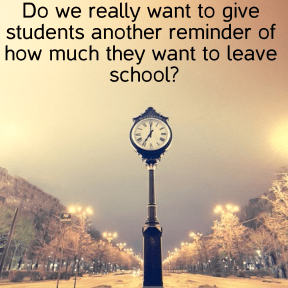
The other day I was asked, “What is the one thing you would tell teachers to stop doing as the end of the year nears?” I needed no time to think because my answer is simple; the countdown.
I used to do the countdown with my students. 20, 19, 18 days left of school. Each day the kids would get more excited. “We are almost out of here, Mrs. Ripp!” They got crazier as the countdown neared the end, energy barely contained, and I loosened the reins, had fun, did less curriculum and more community building. Except the days dragged on. The kids grew restless, and I even started looking at the clock, wishing the day to be over. Was this what teaching the last few weeks of school would always be like?
Six years ago, after a particularly trying week, I had an epiphany – one that many have had before me. I was creating the excited mess unfolding every day in my classroom. My choices in doing a countdown and stepping away from our routines were signaling to the kids that school no longer mattered. That what we were doing no longer mattered. That all they had to do was wait it out and then this, too, would finally be over. As if our students needed any more reminders that school is not a great place to be.
So I stopped the countdown, I went back to teaching and have not looked back since. Because while the countdown may be fun on the surface; another way to show off student accomplishment – you made it through 7th grade -it also sends a much deeper message; we are done with the year. I am done with you. I cannot wait to be done and finally get a break. Is that really what we want to tell our students?
Yet, this is not the only reason I hate the countdown. One year, a child cried under his desk on the last day of school. Inconsolable, I asked him what had happened. Had someone said something to him that I had not caught? Instead, he looked up at me, tears running down his face and said, “Don’t make me leave…I don’t want to go on vacation, I want to stay here.” I cried with him and did the only thing I could, hug him and tell him I would always be here for him if he needed me. Yet, his words have stayed with me all of these years. This child did not look forward to summer. This child faced a summer of unknowns, of food shortage, of not knowing who he would live with, of who would care for him. Summer did not represent a break, but a punishment. Our classroom was his safe space. In our classroom, he felt loved. By counting down the days, I was reminding him every day of what was ahead after that last day of school; uncertainty, fear, hunger. None of those messages were what I hoped to convey to my students.
So It is not that we don’t know how many days are left. I have 38 days left to be exact and so much still to teach. It is just that we don’t advertise it. We don’t actively remind children how much better summer will be than what we are doing. It undermines the entire mission we have had all year of instilling the importance of the work we do. It undermines every single time we have said that school is important. So now, when a child tells me that they are excited about summer, I tell them I am too, but also that I will miss them, that I will miss our learning, that I will miss our classroom. That we have so much learning still to do. That we will work to the very last day because our time is valuable. Because we need every minute we can get.
If you like what you read here, consider reading any of my books; the newest called Reimagining Literacy Through Global Collaboration, a how-to guide for those who would like to infuse global collaboration into their curriculum, was just released. I am currently working on a new literacy book, called Passionate Readers and it will be published in the summer of 2017 by Routledge.If you are looking for solutions and ideas for how to re-engage all of your students consider reading my very first book Passionate Learners – How to Engage and Empower Your Students. Also, if you are wondering where I will be in the coming year or would like to have me speak, please see this page.
Filed under: Be the change, being a teacher, end of year


April 7, 2017
Audience Wanted for Elephant & Piggie Performance Videos
The students have been hard at work figuring out how to be better speakers and they are now ready to show the world. Next week, my students will be performing Elephant & Piggie stories to their peers while I record them. We are looking for other classrooms to view some of these recorded performances and rate them using a simple form. Classroom audiences can be any grade as these are picture books being performed but we would especially love K-3. While students appreciate the feedback I give them, they really need a bigger audience than just their classmates and me to grow as real speakers.
If you are interested in perhaps viewing a few, please fill out the form below. You can view just one or as many as you want, what matters is the feedback! You will have a few weeks turn around, so feedback will be due by the end of April or so. I will email you further details once the videos go live. Thank you so much for considering helping out these amazing 7th graders.
Filed under: feedback, global


April 4, 2017
On Boys Will Be Boys
On Saturday, while at our park, my four-year-old daughter was asked to pull down her pants by a five-year-old boy. I was 200 feet away and yet I didn’t see it until it was too late. When I asked her what had happened, she told me he had told her to do it in exchange for the stick he had. So she had, no big deal. Even though, her father and I have told her numerous times that her private parts are just that; private. Even though her father and I have told her that a request like that is not ok. As I told my husband what had happened and how we needed to speak to the parents of the boy, he hesitated for a moment, “Isn’t that just what little boys do? Ask for stupid things? Not think about the bigger picture.” I thought of our own son and how this is not what I expect out of him. That he better know better because that is how we raised him and so I carefully explained that perhaps that is just what some little boys do, but that does not make it ok.
Because those little boys grow up to be big boys. And those big boys continue to make stupid comments that we, as girls, as women, have to just shrug off as if “boys will be boys.” Because those little boys grow up to think that it is okay to say whatever they want, to ask for things they shouldn’t ask for, all because it doesn’t hurt to try. No harm done. Just kidding.
I see it with my students. How our girls are continuously expected to just take the crude jokes. To be told that they are not as strong as boys, to try so hard to be accepted by the boys they adore and forget about who they are in the process. I see it when they don’t stand up for themselves. I see it when otherwise wonderful boys push them out of the way, take their spot, take their things, eat their food, or make a comment about their looks. I see the acceptance when they don’t speak up, when they don’t fight back, when they roll their eyes and move on. And it is not all of the boys either but only some, those who feel that this is the expected behavior if you are a strong boy. Those who dole out harsh words when they view another boy as weak and shrug when I get upset that they just used my gender designation as a put-down. Boys will be boys alright.
I see it my own life, still to this day. I see it when I think of how many “innocent” comments I have endured. How many times I have been subjected to borderline behavior and I was too nice to point out my own discomfort. I was too worried about how I would be seen. I didn’t want to rock the boat, because I didn’t want to be seen as an overreacting female and perhaps get a reputation of not being nice. How I have been told on numerous occasions that it is wonderful to see someone as pretty as me out speaking. How it must be nice to be chosen because I am female. How my message may not be that new but people love it because of the whole package I present, how well put together I look. How big I smile. How pretty my hair is. How the work I do, how the truths my students tell me, get dismissed in one comment about how beautiful I am and yeah what I said was nice too. And I smile, and I thank them for the compliment, rather than point out how dismissive those comments are of all the work I have done. I hold my tongue because I don’t want to cause a ruckus when it was just one little comment, one little thing, and perhaps they didn’t think about it as much as I now do.
And I look at my daughters and also at my son and I realize that perhaps our focus needs to be on the little things more than the big. That perhaps female, or any child’s really, empowerment and self-validation are too often damaged in the small every day. In the comments, in the hallways, in the lunchroom, where we are reminded of what our role should be; pretty, quiet, willing to give up whatever we have. That all of our children look to us and so it is up to us to figure it out. To find the courage to speak up, to speak back. To claim our spot and not stand for being told that we got the spot because of our looks, our gender, or who we know. Because while boys may be boys, we have to realize that right now, those boys are watching, as are our girls. They learn from us. So perhaps it is time we learn it for ourselves.
Filed under: being a teacher


April 2, 2017
On Parent Assumptions and Fear of Change
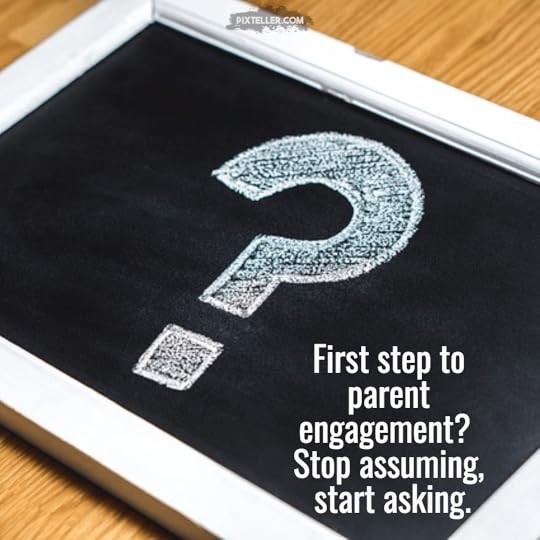
“But how do parents react?”
Just this morning, I was asked again as my latest post about getting rid of homework was circulated. I get the question a lot, I think we all do. I think it marks a great educator when we ask, when we value what parents think. And yet…often our assumptions about what parents will think of a change we implement are just that; assumptions. Not based on actuality, not further pursued. Not questioned, but instead assumed as true, because, perhaps, it happened to someone we know. Or because there was that one time where it happened, so now it must be true for every time.
I think the fear of parent reaction holds us back as much as our own fear of change. We assume they will protest. We assume they will be upset. We assume they will rebel against the changes we make because parents always want school to be like it was for them. But it is not true, at least not always. How do I know? Because for the last seven years I have asked.
When I got rid of homework, most parents cheered. They told me that they wanted their child to pursue other things outside of school and now could. They told me how tired their child was after school, how much homework was a struggle between them, how it became one more point of contention in their relationship. How they did not mind the learning, but the tediousness, the worksheets, the assignments that made little sense did nothing for their child. Those who disagreed asked for resources and I gladly handed them to them, a list on a website sufficed.
When I got rid of rewards, parents told me that they were happy their child was not coming home with trinkets, That their child did not need any more stickers, or pizza, or other things that had nothing to do with their accomplishment. That they wanted them to feel proud of their learning, not to be handed anything.
When I got rid of behavior charts, parents told me of their relief, how their child had been anxious, how their child had not cared whether they moved their stick because they already knew they were a “bad” kid and the stick was just more proof of that. They are still telling me in the comments on posts about Class Dojo and behavior charts.
When I changed the focus from letter grades to personal development, parents were still happy as long as they knew how their child was doing. As long as it still made sense to them so they could understand their child’s journey, understand how to support. Understand where they were still developing and where they had succeeded.
So if I have learned anything in these years of trying to be a better teacher, in trying to create more student-centered classrooms, it is that we should not assume how a parent will react. That we should not assume they will hate what we do because it is different, or new, or even a seemingly crazy idea. They care that their child is happy. They care that their child is challenged. They care that their child is supported. That that their child is accepted. They care that their child likes school and does well. It seems we perpetuate our own myths and create the barriers ourselves.
So when I asked parents how I could be a better teacher for their child, they told me when they had ideas, and I tried to act on it as best as I could, because it turns out that when we ask parents; they have a lot of great things to say. They are not as set in their ways as we may think, they do not hate everything we propose. So jump in, stop assuming, and start asking. It will change the way you teach.
If you like what you read here, consider reading any of my books; the newest called Reimagining Literacy Through Global Collaboration, a how-to guide for those who would like to infuse global collaboration into their curriculum, was just released. I am currently working on a new literacy book, called Passionate Readers and it will be published in the summer of 2017 by Routledge.If you are looking for solutions and ideas for how to re-engage all of your students consider reading my very first book Passionate Learners – How to Engage and Empower Your Students. Also, if you are wondering where I will be in the coming year or would like to have me speak, please see this page.
Filed under: assumptions, Be the change, being a teacher, parents


March 29, 2017
On the Need for Getting Rid of Homework
I realize I have not written much about homework the last few years. Not because it is not worth writing about, but because I do not really give it. Yet, the other day, as I presented a workshop on passionate literacy, someone asked me how much homework my students have, when I told her they are asked to read 20 minutes and that is pretty much it, she was surprised.
After all, how can we cover everything there is to do when we only have 45 minutes without giving homework? How can I provide enough practice for my students without telling them to work on something at home? How can I make sure they are ready for 8th grade, for high school, for college, for real life if I don’t ask them to work on things outside of class?
Well, it turns out that there is a way to do this, where I am able to ask students to read outside of class but almost nothing else. I have written extensively about my decision to limit homework; some of the many reasons include the research that tells us how little benefit homework has for kids, how much it drives stress, the research on how much teachers versus students speak, but most importantly; my students telling me how they really feel about our homework practices. I realized that the kids who needed the extra practice, needed further teaching, not more work. That the kids who did the homework diligently didn’t really need to do it. That some things that were not meant to take a long time did. So seven years ago or so, I decided that I would try to limit the amount of homework as much possible, here is how we have done it.
We make a commitment.
I start every year by telling students that in our classroom I will make them a promise; if they promise to work hard, then I promise to not assign homework beyond the 20 minutes of reading I expect every day outside of English. One of the big reasons often touted for assigning homework is that it builds time-management and resilience in children, but so does hard work in class. I make sure my students have enough work time in class to practice what they are learning. If they decide to not work hard, then the natural consequence is that they still have work to finish once the class is over. This approach has motivated many students to use their class time better, and it has definitely clued me into which kids are working super hard and still having a hard time understanding the work, then leading to further teaching.
We slow down.
Rather than doing many small projects, I have the luxury in English of focusing on several large projects, we call this being a part of the slow learning movement. It is, therefore, rare that we have an assignment that requires being turned in the very next day. We don’t have quizzes or tests either, and so the bulk of what we do takes a week or longer, therefore allowing the students that need extra help or practice to get it in class.
We work hard.
I used to take a more leisurely pace when I had the luxury of more time, but now a sense of urgency often drives us forward. This doesn’t mean we rush, it just means that time is precious in our classroom. At the beginning of the year, we discuss how to be more effective with our time and students quickly set up routines for this to happen. Instruction/exploration time starts the moment the bell rings and ends when the bell rings again. We don’t have a lot of transitions or downtime as students manipulate the learning environment as needed, most of the time, not waiting for me to tell them to get ready for something, find supplies, or any other small things that can end up taking a lot of time. This means that most days, though not all, we get the most out of the precious instructional minutes give to us; 45 minutes to be exact.
We look at deadlines together.
The team I am on have a shared Google calendar that I try to keep updated with big project/tests deadlines. This allows us to see at a glance where big things may collide and then gives us a way to avoid that. While not all deadlines can be moved, many can, and I have no problem adding an extra day if it means students will not experience the unnecessary burden of multiple things do, thus being able to produce higher quality work.
We do bigger projects.
Another part of our slow learning movement is that most projects cover multiple standards. That way I don’t have to constantly invent a project or an assessment and students are working on long-term goals, rather than short ones. It also means that many students can find success within a project even parts of it are still difficult for them.
We have venues for extra practice.
In the seven years since I have severely reduced homework, I have had one parent complain about it. Yet this is an assumption that runs rampant; how parents, other teachers, or even administration will react. I certainly do encourage you to partner with your administration, a great way to get permission is to ask to pilot limiting homework, and also discussing with your colleagues. Some may see it as a knock on their own practices, although it is not. In regard to the one parent complaint, I have had, this parent wanted more educational experiences for their child and I gladly provided them. I created a list of additional resources they could use with their child if they wanted to further practice their skills, in turn, I told them that I did not need further proof of their understanding and so all extra work could stay at home.
We spiral our curriculum.
Because I am dictated by a standards-based curriculum, I have the luxury of spiraling our standards. That means that all seven of our standards are taught in more than one quarter. Why does this matter? Because it means that even if a child does not achieve proficiency in a standard the first time it is explored, that standard will come back again, allowing me to assess them once more.
I limit my speaking.
I really try to monitor and actively limit how much time I spend giving direct instruction to students, instead of thinking of various ways I can scaffold the instruction I need to provide. Tools such as Google Classroom, anchor charts, and even extra handouts or other visuals (one of these years I will make videos as extra reference points) help students work through the progress rather than frontload all of the information. Because the students I teach are at so many different stages it simply does not make sense for me to deliver most of my instruction orally.
We continually commit to it.
Limiting homework has been such a natural part of our every day, and yet, it is also a commitment I make. It is not that all of my students “get” something the first time around, it is that I try to help them practice with the content in class, rather than outside of it. It is that I want to honor the commitment that kids bring to the work we do in class. It is that it is my job to figure out how to do the work we do within the time we are given. It doesn’t always happen, but most of the time it does.
It, therefore, sounds incredibly simplistic, and I do not mean it as condescending, but limiting or completely getting rid of homework really does come to down to us; to how we spend our time in class, to how much we stop talking, to how we do not waste any time, to how we look at our curriculum as learning explorations and not stand-alone projects. To how we tell the kids that, in here, we will challenge them, but that means that they will get the reward of no work after if they rise to the occasion. That it is on them to use their time, to ask the questions they need answering, to reach out if somehow they are missed.
Seven years ago I told myself that all of the extra work I assigned was not really worth the time of my students, and I was right. It turns out they don’t need the extra work to learn deeply.
If you like what you read here, consider reading any of my books; the newest called Reimagining Literacy Through Global Collaboration, a how-to guide for those who would like to infuse global collaboration into their curriculum, was just released. I am currently working on a new literacy book, called Passionate Readers and it will be published in the summer of 2017 by Routledge.If you are looking for solutions and ideas for how to re-engage all of your students consider reading my very first book Passionate Learners – How to Engage and Empower Your Students. Also, if you are wondering where I will be in the coming year or would like to have me speak, please see this page.
Filed under: Be the change, being a teacher, homework, no homework


Some Favorite Free Verse Books for Adolescents
While many books are being read in room 235D this year, one format reigns supreme no matter what; free verse. These brilliant books with their impactful, but shorter, text is one of the biggest tools I have in getting students reconnected with reading. There are a few reasons for this; students who are building up stamina in their reading concentration can stay focused with a faster-paced story, students where “regular” books intimidate them do not feel as overwhelmed due to less text on the page, and finally; the stories are enchanting. So what have some of our favorite free verse books been?
[image error]
This list would not be made possible without the incredible book The Crossover by Kwame Alexander. While free verse novels have been around for a long time, The Crossover and Booked are what legitimized the format for many of my students. This is the book that clued them in, this is the book that made them stay.
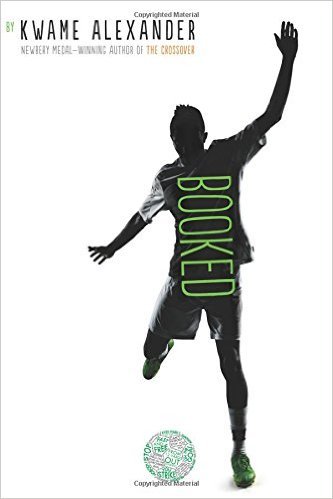
Another book by Kwame Alexander, Booked just kept the excitement going. For this soccer-loving classroom, this book is never on the shelf for long.
[image error]
The Playbook: 52 Rules to Aim, Shoot, and Score in This Game Called Life also by Kwame Alexander is technically not free verse, but my students categorize it as such. Interspersed with quotes and stories, this book has also been on heavy rotation.
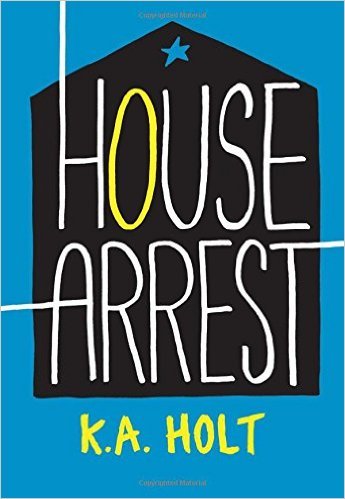
House Arrest by K.A. Holt is another favorite. This one about a boy on house arrest is a great conversation starter for building empathy and grappling with life in general.
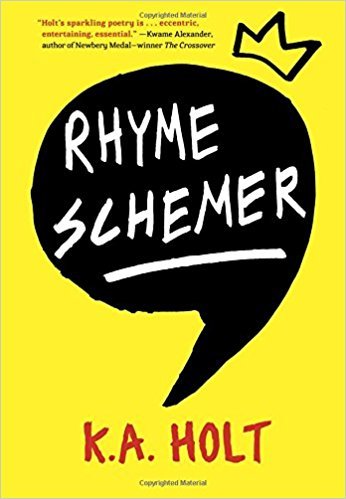
Rhyme Schemer also by K.A. Holt is about a bully who becomes the victim. I love how students relate to this story.
[image error]
Home of the Brave by Katherine Applegate

The One and Only Ivan by Katherine Applegate (Author), Patricia Castelao (Illustrator) – no list would be complete without the genius of Ivan. This book is also one of the most powerful read alouds I have ever done and a former Global Read Aloud book winner.
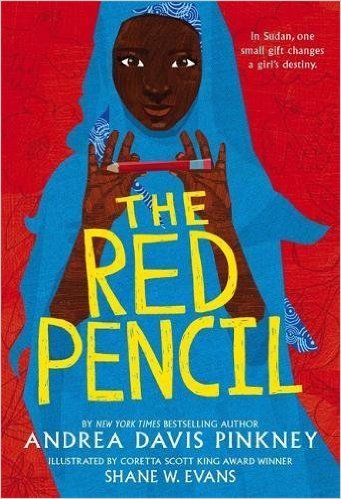
The Red Pencil by Andrea Davis Pinkney (Author), Shane W. Evans (Illustrator)

All the Broken Pieces by Ann E. Burg set in the US during the Vietnam War it follows Matt Pin, a child from Vietnam who has been rescued from the war and brought to the United States for adoption. Powerful historical fiction.
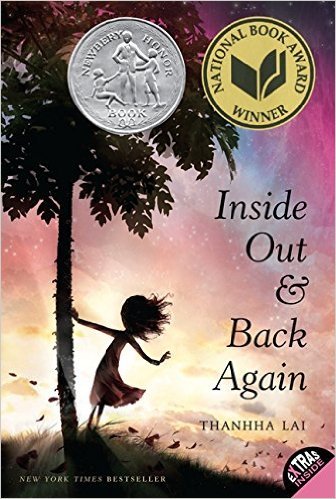
Inside Out and Back Again by Thanhha Lai follows Ha and her family as they also flee the Vietnam War and make their way to the United States as refugees. How do you fit in when you feel so different?

Brown Girl Dreaming by Jacqueline Woodson has won over the hearts of several of my students. While not read by many of my students those who have braved its pages have devoured it and made it a heart book.
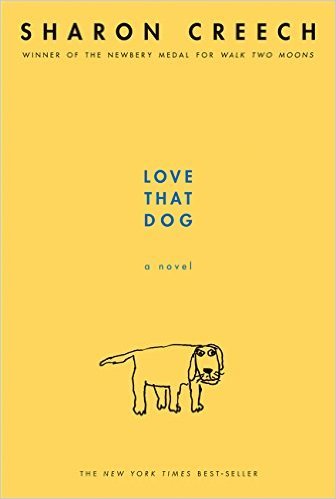
Love That Dog by Sharon Creech is the very first read aloud that made me cry in front of my class. To this day I cannot read it without crying. It’s follow up Hate That Cat is also a great read for students.
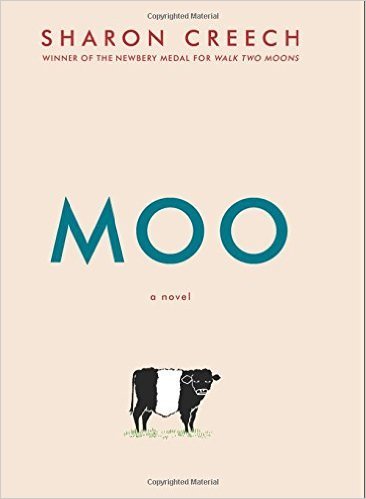
Moo: A Novel also by Sharon Creech is a book that especially my boys have really liked, passing it around the room when they finish it.

Red Butterfly by A.L. Sonnichsen (Author), Amy June Bates (Illustrator) is about an orphaned young girl living in China with her adoptive American mother who wonders why they cannot move to the United States or leave their house much.
[image error]
While mature, Sold by Patricia McCormick is one that many students have read. It follows the story of Lakshmi who thinks she is being sent to the city to be a maid to support her family in Nepal. Instead she is sold into child prostitution and must try to make her way home.
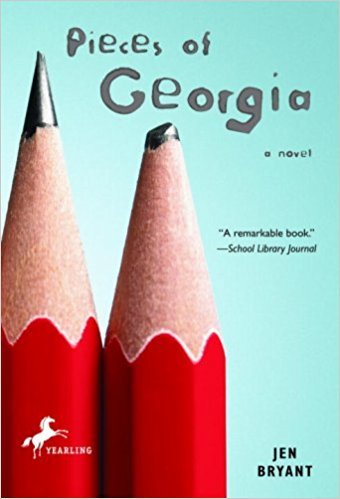
Pieces of Georgia by Jen Bryant is another popular read as Georgia tries to navigate life without her mother.
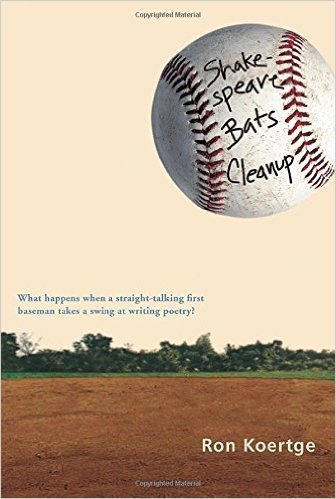
Shakespeare Bats Cleanup by Ron Koertge is one for my students that are not sure that free verse is for them.
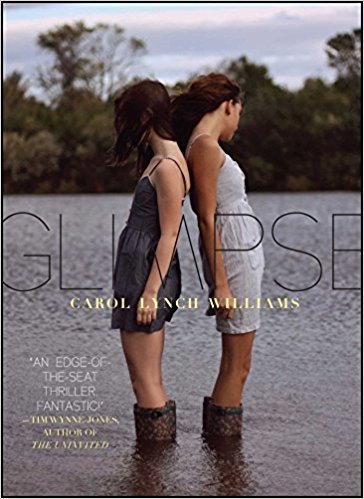
While Glimpse by Carol Lynch Williams is more mature, it has really captured the interest of many of my students, girls in particular. I book talk it and let them know that it is definitely PG13 or even PG14 but that they know themselves best.
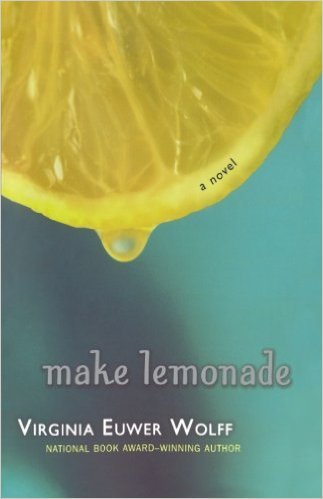 Another more mature free verse is Make Lemonade by Virginia Euwer Wolff. With its story of a girl who tries to help a teen mom, the kids reading this one are really touched by the story.
Another more mature free verse is Make Lemonade by Virginia Euwer Wolff. With its story of a girl who tries to help a teen mom, the kids reading this one are really touched by the story.
Shark Girl by Kelly Bingham reminds me of Soul Surfer, a story that is in heavy rotation in our classroom, yet this one is fictionalized free verse. This one is in heavy rotation due to its gripping story of loss and survival.

What happens when loneliness is all you know and you have to recede into a fantasy world to make yourself happy? That is the question explored in The Lonely Ones by Kelsey Sutton.

I Heart You, You Haunt Me by Lisa Schroeder is a strange book for me, but my students really like it. While I get the premise of a forever love, I find it disturbing that a boyfriend chooses to haunt you. However, rest assured that it all comes out ok in the end.

Life on the Refrigerator Door: Notes Between a Mother and Daughter by Alice Kuipers is just that; notes between a mother and daughter hardship surrounds them.
 The Weight of Water by Sarah Crossan follows the story of Kasienka and her mother as they move from Poland to England. How do you figure out how to fit in in a culture that tells you that you are foreign no matter what you do? And where is her father?
The Weight of Water by Sarah Crossan follows the story of Kasienka and her mother as they move from Poland to England. How do you figure out how to fit in in a culture that tells you that you are foreign no matter what you do? And where is her father?Consistently Amazing Free Verse Authors
There are a few authors where I pretty much purchase their books because I know they will be loved by my students. These are:
Nikki Grimes – Garvey’s Choice is a recent favorite
Margarita Engle – The way she shares about other cultures is remarkable
Ellen Hopkins – some of her books are too mature for my 7th graders so read them as needed
Jacqueline Woodson – You cannot go wrong with her or with
Kwame Alexander
This is just a short list, we have many more free verse books in our classroom but these were the ones that first popped into my mind. To see more of our favorite books, go here or follow me on Instagram for actual book recommendations.
Filed under: being a teacher, books, Literacy, Reading


March 24, 2017
This Year
“Has this year made it harder or easier to write, Mrs. Ripp?”
We are sitting in circle today (a restorative justice process we use to communicate), and the question now hangs between us, fourteen kids staring at me, waiting for an answer.
I know what she is asking me; has this year, with this group of kids, made me write less or more? Has this year been too tough to handle or have I found inspiration? What will I tell others about the kids I teach?
I don’t hesitate, I tell her the truth, after all; these kids tell me their truth all of the time.
So I tell her it has been hard. That I have had to weigh my words more carefully. To really craft the sentences that have been published on this blog. To think deeper before hitting publish. To take a moment to breathe before I go to write. To write clearly, to write with intent. To write with care and with meaning.
But not because this year has been hard.
Not because these kids have been hard, although some days have been hard.
No.
But because this year I have been pushed as an educator further than I have been pushed in many years.
Because this year I have felt like a terrible teacher more days than before, and not because I lost my temper, or things fell apart, but because I wanted to be everything for everyone. Because I wanted to change the narrative; the story these very kids told me of the reputation they came with, of how they knew they were the “bad kids” and how hard that was to carry when they didn’t feel bad. To help them know that they are not “bad” or “trouble,” that the actions of a few do not define the whole. I wanted to help know that we, teachers, saw this as a new beginning, that with us they could reach the goals they set, even if some days would be hard. To help them all believe that reading was worth their time. To help them understand how transformative writing could be. To help them at this incredible stage of their journey. To make sure that every day I brought my best because they deserved it.
But some days I have failed. Some days the minor things have piled up and I have left feeling like I could never be enough. That I was not enough. And that is hard to write about. After all; which parent wants to read about how their child’s teacher does not think they are enough? Who wants to publicly admit that sometimes they don’t have the right answer, a new idea, or even a clue as to how to make everything work for all of the kids you teach.
Yet. This year, with these kids, this is one I will remember. For how they pushed me, for how they questioned, for how they wanted to be something more than the story they felt was written about them. This year may have been hard to write about, but it sure has been good to be in. And that is something worth remembering, even when we feel we are not enough.
Filed under: being a teacher, being me


March 23, 2017
Small Steps to Become a Better Advocate for Social Change
I do not write this post as an expert. Nor as someone who knows more than others. Where there are areas that I feel I know some things, this is not one of them. And yet, how many of us, and by us, I mean white educators, are trying to do better in our classrooms when it comes to creating an awareness of the world we live in. Trying to be better educated so that my students can become better educated when it comes to social justice, equity, racism and a host of other systematic oppressions happening to many in our nation. So this post has been percolating as I have been on my own journey to know more, to teach more, to learn and to stand up. To be a part of the solution rather than just a part of the problem. So please read this post as a starting point. Please take these ideas and do something bigger, do something more, because that is what I am doing. This is a just a beginning to change, a small step on a long journey.
So what I have done to get further on a journey of enlightenment and activism?
I have listened.
Because of my own inherent privilege. Because of the color of my skin. Because of where I live, my financial situation, and the fact that I have the ability to walk away from things that other people cannot, my job is not to speak right now, (although I guess you could say this blog post is speaking in some ways), but instead to listen. To listen to those who know. To listen to those whose voices have been silenced. To listen to everything that is shared.
I have learned.
The job of others is not to educate me when I have questions. I have a computer. I have the time. I have a vast social network of really brilliant people who share thoughts, articles, book, speakers, and anything else that might help educate others and so the least I can do is pay attention to what is shared. To read what is out there. To realize and to remember that there is so much to learn. To remember that while this may feel like an educational quest of sorts for me, that for others this isn’t a choice of exploration but instead life. That this is not about MY journey toward a better place of understanding but instead about the bigger journey of others.
I have found experts.
I am so grateful to all of the people who are out there for us to learn from. Communities like Educolor, We Need Diverse Books, and Reading While White push my thinking and lead me down a rabbit hole of reflection and pursuit of more. Fiercely intelligent women and men like Val Brown, Ebony Elizabeth Thomas, Cornelious Minor, Rafranz Davis, Shaun King, Debbie Reese and Rusul Alrubail push my thinking and lead me to others who I can learn from. Find your own people to follow. Find those that will push your thinking. An event I excited about is the #CleartheAir chat happening on April 4th or the free EdCollab Spring Gathering happening on April 8th. The reason I come back to the people I mentioned before is because they make me think about all the things I need to work on, not because they placate me and tell me I am doing a great job being an ally. It is not the job of them to educate me, it is my job to be educated. So join the conversations but listen first.
Stay.
Don’t walk away from hard conversations. Don’t block people who point out your mistakes. Don’t react in anger. Learn something. Read the uncomfortable. Realize your own shortcomings. You will be embarrassed at your own ignorance, you will get upset, you will feel like you are right and others are wrong. Just stop. Reflect. Then learn something. This is bigger than me. This is bigger than us.
Critically evaluate your curriculum.
I work for a district that gives us an immense amount of freedom to create relevant learning experiences. I am grateful for that. That also means that we can tear apart the curriculum we teach. So examine what you are teaching, how you are teaching and look for hidden biases. Look for your own assumptions. If you are teaching history, which I think we all do in some way, whose history are you teaching? Who is being represented as normal in your classroom? Who is the status quo? No curriculum should get a free pass because it is a tradition or because it is not that bad. Start with tomorrow’s lesson and take it day by day; what is the story being told, how are people represented?
Create a chance to learn.
I think our students deserve to have a chance to formulate opinions about the world we live in. My job is not to shape the opinions of my students, but instead to offer them a chance to create opinions. Even in polarized communities, and perhaps particularly in those, we should be looking at bringing in the hard conversations that are happening around us. So, find a way to weave the stories out there. If you have to teach compare and contrast; why not compare and contrast opposing media sources? If you have to teach how to annotate, why not annotate articles that have to do with the travel ban? Think of the ways you can bring in current and relevant topics so that students can be educated on them and shape their own view. Otherwise, our silence speaks volumes.
Bring others in.
There are many reasons I love Skype or other technology but one of the biggest is how it allows me to bring other people into our classrooms to speak to the students. Right now our world seems driven by fear of “others” and so utilizing technology we have an opportunity to bring those “others” into our rooms. If students live in a predominantly one-faceted community, speak to experts that do not share their same experience. If students have biases, bring in people who break those stereotypes. While it is not the job of others to educate us, create opportunities for your students to interact with classrooms that do not mirror their own experience through globally collaborative projects like The Global Read Aloud or any of the ones found here. We cannot stay afraid when we are educated.
Critically evaluate your classroom library.
Just like your curriculum establishes the norm so do the very books kids read. It is not enough to have diverse books if they only feature books that show one or two experiences of others. It is not enough to have books that only highlight certain aspects of a culture. I wrote about how I assessed my own classroom library here, but it is bigger than that. Buy #OwnVoices books, speak up for better diversity in publishing. Spend your money supporting authors and illustrators who are typically underrepresented and then share those books with your students and others. Amplify and continually push your own thinking on what makes a quality book. Be critical as you read books yourself and ask what message they tell kids.
Speak up.
I am now contradicting myself because I just said to stop speaking, but there is an area where we need to speak up right away; the critical underrepresentation of POC as speakers, authors, leaders, and even teachers. If you are at a conference where the line up is all white; ask questions, raise a ruckus. Look at authors getting deals, being represented, being featured – who is getting the attention? Same thing goes for in your own district; is there a plan for attracting POC to teach in it? Is there any sense of urgency? If not, create one. Our schools, our conferences, our learning opportunities should reflect the diverse society we live in, not the whitewashed one that is currently portrayed. So use the platform that has naturally been handed to you as a white person and use it for good.
There is so much more to be done. There are so many things I still have to learn. There are so many mistakes I will still make as I try to grow myself, lord knows, the road is long ahead. But I hope that these few things I have shared here can offer you a place to start, some people to follow, some things to read. I urge you to go on this journey; our students deserve it and so do our own children.
Filed under: Be the change, being a teacher, being me






